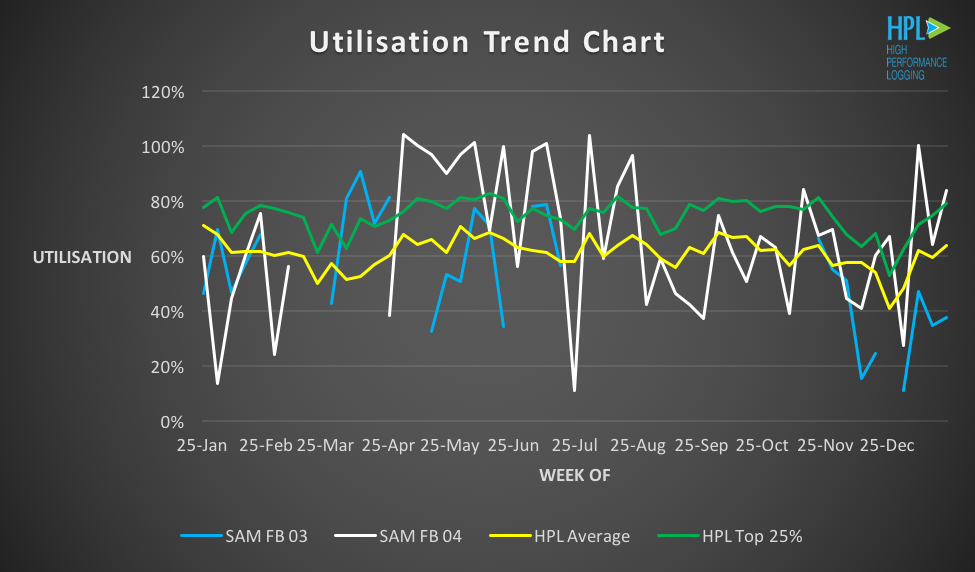Efficiency is a beautiful thing. So are renewable resources. Together, they provide a significant opportunity to lower the carbon intensity of the energy and products we use everyday. And for Nova Scotia’s renewable resource sector to play a role in this transition, competing with significantly larger jurisdictions, efficiency needs to be a primary objective.
That’s why in 2015, BioApplied partnered with the Canadian Woodlands Forum (CWF) to create High Performance Logging, which delivers the Contractor Operator Efficiency Program (COEP). COEP is designed to show forestry contractors how efficiently their equipment is operating, identify opportunities for improvement, and then implement an action plan that will improve their productivity, and therefore their bottom line.
Since COEP went live at the beginning of 2015, program participants that actively review and act on their data have seen impressive improvements in their working hours, referred to as Productive Machine Hours (PMH), ranging from 11% to almost 30%. What has become clear over the past year is that the contractors who pay the most attention to their performance and then use that information to implement solutions are the ones who experience the greatest increases in their PMH.
To determine each contractor’s PMH, the program uses data from collection tools such as FPDat (website here), which is a computer that is placed in forestry harvesters and feller-bunchers. By measuring vibrations, the computer is able to tell when the forestry equipment is idle, and when it is harvesting wood. That data is uploaded to a central database via satellite, where it is downloaded by the COEP team. Once downloaded, the data is analyzed to calculate Utilization, which is the amount of time the equipment is harvesting wood (PMH) as a percentage of scheduled hours. Each contractor’s Utilization is calculated weekly, and it is compared with the average for all forestry equipment that has an FPDat in the program (currently 39 units), the top-performing 25% of those 39 units, and the top-performing unit overall. The information is compiled into a visual report that is shared bi-weekly, including both a snapshot of the most recent data as well as a 12-month rolling trend. This allows the contractor to benchmark their performance against both their peers and their own historical results.
The information contained in these reports is leading to healthier, more financially stable forestry contractors. These contractors are a key piece of the fiber supply chain, itself a key piece of the low carbon economy. If you’re interested in learning more about COEP, or one of the many other ways BioApplied and our partners stand for renewable resources, please reach out to us via the Contact Us page.
See below for some examples of charts included with the COEP report:

Weekly Utilisation and Working Time

12-month Running Utilisation Trend.

